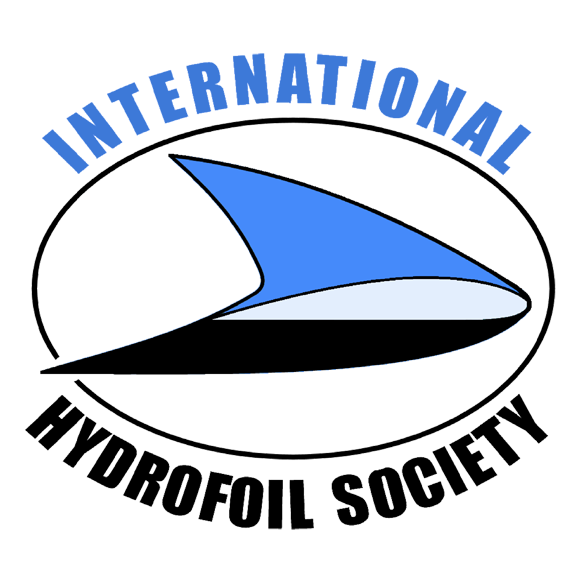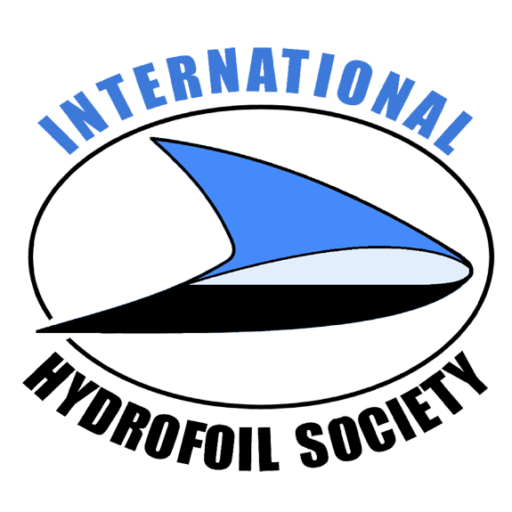Robert J. Johnston
is a long-time member of IHS having joined in the mid-seventies.
He was a charter member of the North American Chapter of IHS and was the fifth presi-
dent of the Society. His involvement with hydrofoils started when he was on active duty
with the US Navy and fulfilled the assignment of Hydrofoil Project Officer. His interest
in hydrofoils led to his resignation from a Regular Naval Officer and a transfer to the Na-
val Reserve. He is a retired Captain of the US Naval Reserve. Following his Navy resig-
nation, he joined Miami Shipbuilding Corporation as a vice-president in charge of their
hydrofoil development. This responsibility included the construction and evaluation of
several submerged hydrofoil vehicles, principally in the amphibious application. He later
became President of Miami Shipbuilding Corporation. In 1960, he joined the Grumman
Corporation’s marine group. He was a program manager for the Maritime Commission’s
DENISON
, the design of the US Navy’s
PLAINVIEW
(AGEH-1), the design and con-
struction of the
FLAGSTAFF
(PGH-1), and the commercial hydrofoil
DOLPHIN
pro-
gram. He became Grumman’s Director of Marine Programs. In 1973, he returned to the
US Navy when appointed Technical Manager of the Hydrofoil Development Program at
the David Taylor Naval Ship Research and Development Center (DTNSRDC). In 1982,
he left DTNSRDC and formed Advanced Marine Systems Associates, Inc., a consulting
organization that undertook specialized studies in high-speed waterborne transportation
for the US Government, municipalities, and private investors. He is now retired and
works at maintaining his golf handicap.
ABSTRACT
This paper traces the development of the International Hydrofoil Society from its London
conception, its formation as a Charity under the laws of England, the addition of a North
American Chapter, and its transition to a not-for-profit corporation under the statutes of
the United States. The story is primarily about the people who have made this all happen,
survive, and prosper for twenty-five years. In a sense, it describes a great respect and
friendship that the author has enjoyed with the characters of this review.
INTERNATIONAL HYDROFOIL SOCIETY (IHS), A
REVIEW OF THE FIRST TWENTY-FIVE YEARS
by
Robert J. Johnston
Presented 14 June 1995
IHS, Review of the First 25 Years
Page 2
INTRODUCTION
It was the fall of 1982 and the location was the Royal Yacht Club on the Isle of Wight.
We had arrived at the dock by the Red Funnel Lines’ hydrofoil from Southampton. This
Club is noted by the principal berthing space, right next to the Clubhouse, always being
reserved for Her Majesty the Queen’s use. The occasion was a dinner party being given
by Royal Yacht Club member, CDR Mark Thornton D.S.O., D.S.C., R.N. (Ret.)
honoring
Sir Christopher Cockrell. Sir Christopher had been knighted for his pioneer invention of
the hovercraft concept. Also present at this dinner were executives of British Hovercraft
Corporation, Robert L. Trillo Eur. Ing., editor of Jane’s
High Speed Marine Craft
and my
wife, Marcia, and myself.
Marcia had been granted special privileges not only to join the group in the main dining
room, but also to overnight with me in the Clubhouse. The Royal Yacht Club had severe
restrictions on women in the dining room and in using the Club’s facilities. A verandah
had been constructed for Queen Victoria’s use so all the women could stay outside. The
evening meal was excellent and the chatter was filled with much banter and nostalgia,
particularly between Mark and Christopher. Much of the banter related to the beginnings
of the International Air Cushion Engineering Society and the International Hydrofoil So-
ciety. It seems that Sir Christopher had used Mark’s idea of a hovercraft society and had
taken over from Mark as the originator. Not to be outdone, Mark had proceeded with the
founding of IHS.
As the toasts of the evening proceeded, a note of sadness became apparent. We toasted
the Queen and the President and then personal toasts took place between Mark and
Christopher congratulating each other on their accomplishments. I shall never forget
Mark’s toast to Christopher including the words “Christopher, this will be our last meal
together.” Mark was dying from lung cancer and a few months later, he was gone. This
was the end of the beginning of IHS.
THE BEGINNING
And so to the beginning… During the 1960s, many individuals in the United Kingdom as
well as in other parts of the world, began to show interest in use of high-speed ferries. To
an island nation such as England, the use of fast ferries was particularly attractive. Much
attention was paid to Sir Christopher Cockrell’s work with hovercraft, although the initia-
tion of this attention was difficult to achieve. Christopher once said that to make an ad-
vance in the marine field, one had to have infinite patience and a very understanding
wife. CDR Mark Thornton, a retired Royal Navy Officer, had recognized the advantages
of high speed marine craft and he, therefore, used his efforts to help promote the hover-
craft concept. Christopher and Mark worked together and became quite good friends.
With the formation of the British Hovercraft Corporation, the role of Mark Thornton
diminished, and he turned his attentions to the growing interest in hydrofoils. It must be
said that CDR Mark Thornton was the instigator of IHS. In 1965, he organized the British
Hydrofoil Association, Ltd., which was the forerunner of IHS. At the same time, Count-

